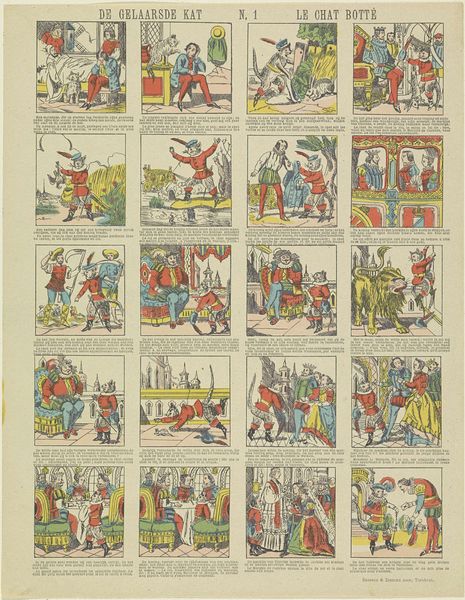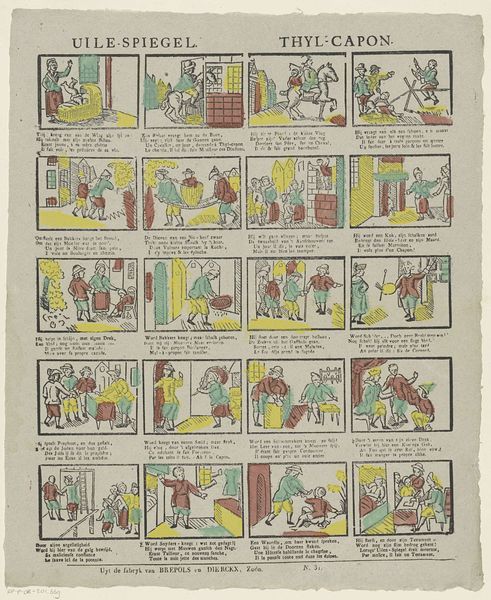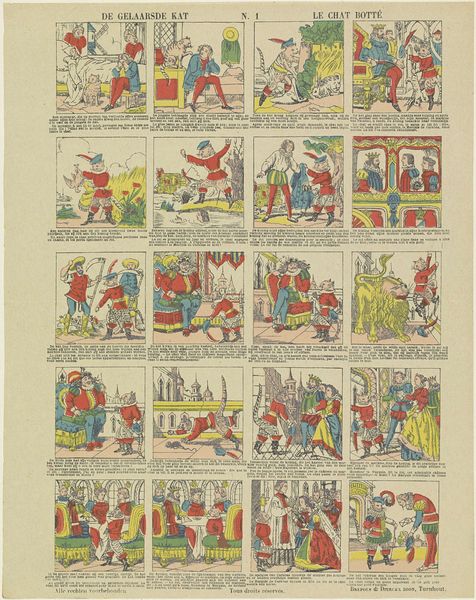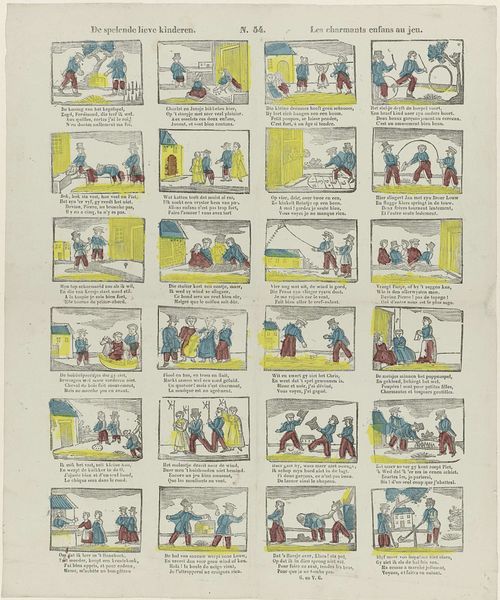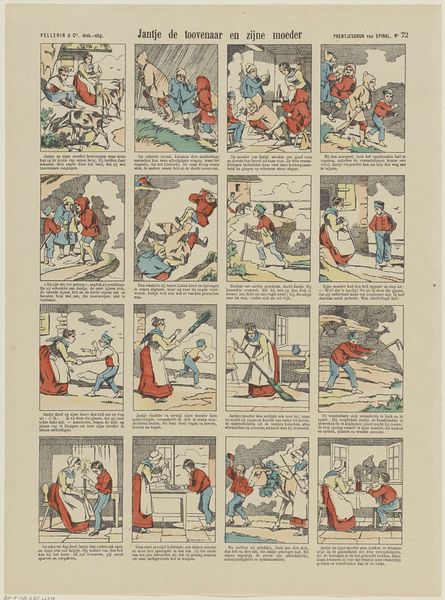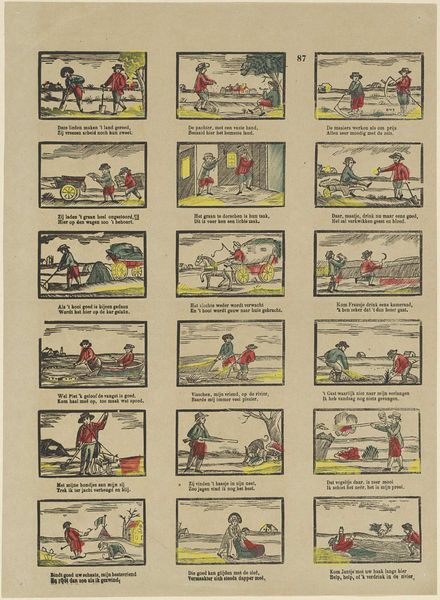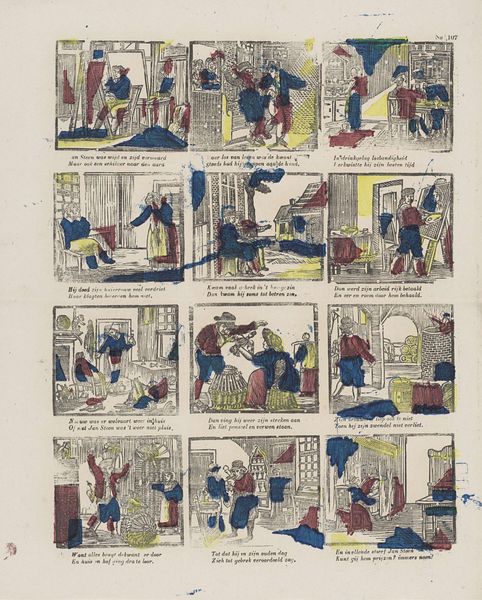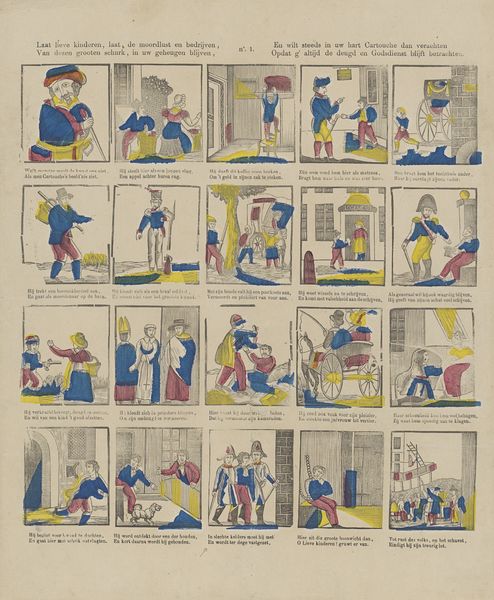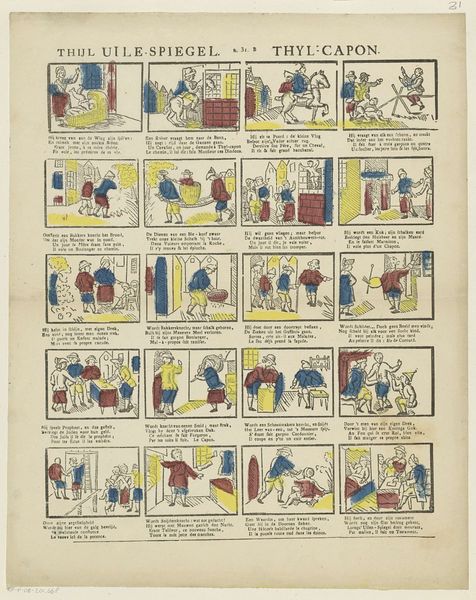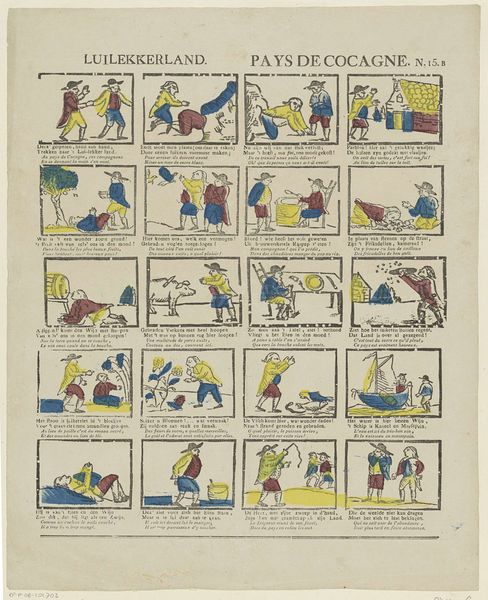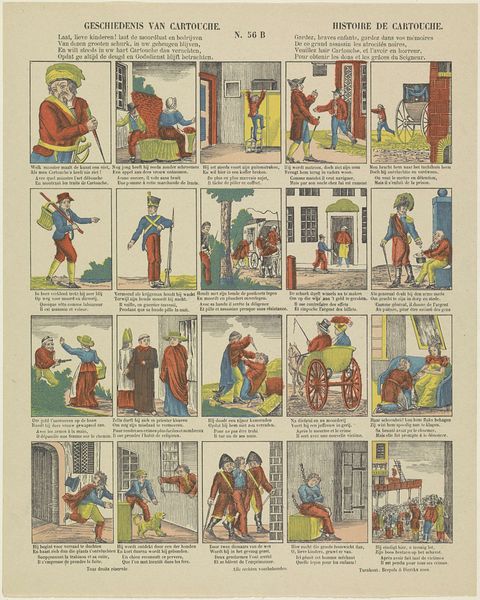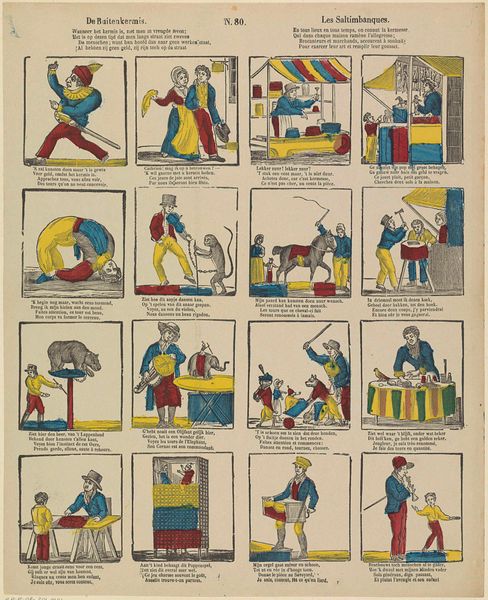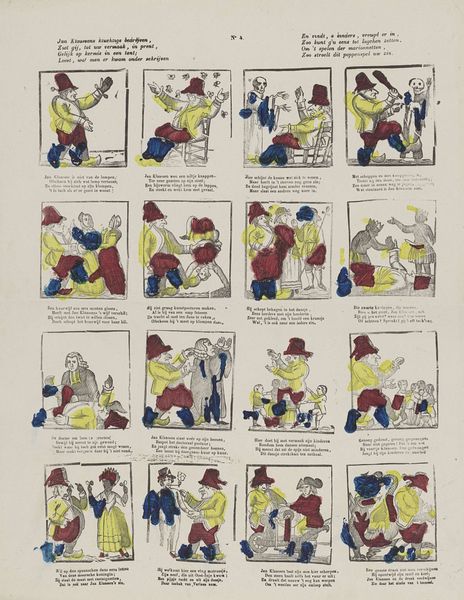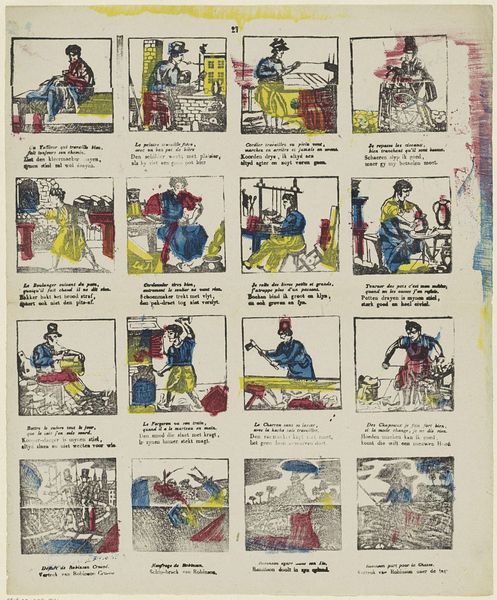
De guitenstreken van Ernest / Le espiègleries d'Ernest 1833 - 1911
0:00
0:00
brepolsdierckxzoon
Rijksmuseum
#
comic strip sketch
#
narrative-art
#
comic strip
# print
#
child
#
comic
#
pen work
#
genre-painting
Dimensions: height 389 mm, width 310 mm
Copyright: Rijks Museum: Open Domain
Curator: "De guitenstreken van Ernest / Le espiègleries d'Ernest"—or "The Pranks of Ernest"—this charming print created by Brepols & Dierckx Zoon, dating somewhere between 1833 and 1911, presents a series of vignettes that immediately struck me. What's your take? Editor: It's the chromatic simplicity. The print, made with rudimentary colors, depicts what appears to be the chronicle of this kid’s bad behavior. Is it chromolithography perhaps? Curator: Most likely. Given its publication dates, this method would suit the period. Let's focus on the imagery. I see repeating symbols of disruption; food being mismanaged, animals being bothered... it suggests a breakdown of domestic order. Editor: I see how the figure of the child, through repetitive imagery, becomes almost archetypal. Mischief and childhood have always been linked visually. Consider the cherubs of the Renaissance or even folklore tales of mischievous imps and sprites. This print fits into that enduring tradition. But let’s examine the conditions of printmaking; what level of craft lies behind it? Curator: Good question. The use of simplified line work hints that this work must have had wide appeal. Perhaps it was distributed within magazines or newspapers or for elementary reading books. The medium impacts our understanding. This artwork can tell us how it was consumed. Editor: And how perceptions of childhood were packaged and commodified! To what degree was childish naughtiness simply entertainment for adults and how the values of the middle classes contributed to their depiction in printed material. Fascinating how this print contains layers of cultural values of the past. Curator: Indeed, seeing the imagery of misbehaving alongside a cost-effective mass printing solution highlights societal and manufacturing forces, at once. Editor: Ultimately, looking at this piece is a chance to decipher how social ideals of youth are constructed via the power of symbolic representation. It encourages us to look beyond the sweet depictions and see their true, multi-layered cultural and historical content. Curator: I appreciate you pointing out these symbolic details, as I focused on the materiality. Together, we've opened this "Pranks of Ernest" to highlight the significance of its production. Editor: Likewise, delving into its means and circulation revealed much about this deceptively innocent artwork.
Comments
No comments
Be the first to comment and join the conversation on the ultimate creative platform.
